Editor’s Note: Vertical recently visited Nepal to report on that country’s civil helicopter industry, which you can read more about in a future issue of the magazine. In the meantime, we’ve teamed up with Airbus Helicopters to bring you exclusive bonus content from Nepal, here and on social media. Find more at verticalmag.com/nepal and on Instagram @verticalmag and @airbus_helicopters.
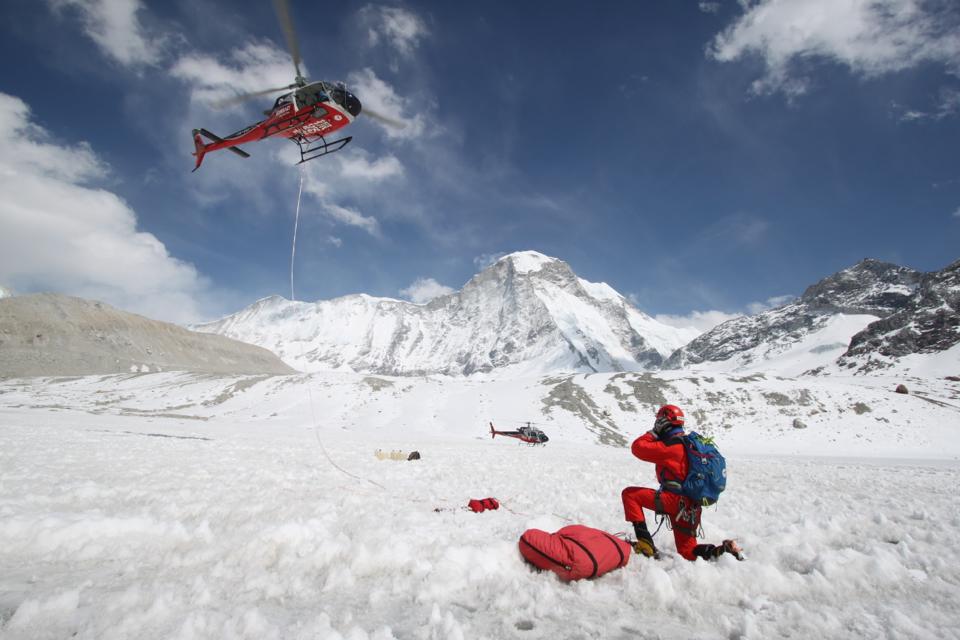
What is it like flying helicopters in Nepal? According to Captain Siddartha J. Gurung of Simrik Air, “for pilots who have flown in the mountains, it’s actually the same — just 10,000 feet higher.”
As one of Nepal’s best known and most experienced helicopter pilots, Gurung has flown countless missions — including technical long-line rescue missions — at altitudes that most rotary-wing pilots will never even approach. Imagine landing on the highest point in the contiguous United States, Mount Whitney, at 14,505 feet (4,421 meters). Now imagine looking up from that point to see mountains towering another 14,500 feet above you. That’s the Himalayas.
The majority of helicopter pilots in the country are Nepalis who have spent most of their lives in and around the world’s highest mountains. Many of them, like Gurung, gained their initial experience in the Nepalese military, although an increasing number of new pilots are following a civilian career path. However, the grandeur and mystique of the Himalayas also attract some foreign pilots, who are drawn as much by the challenge of the work as the spectacular scenery.
“Everything’s challenging in the Himalayas,” said Jason Laing, a helicopter pilot from New Zealand who has flown multiple seasons in Nepal for Simrik Air. Familiar to many television viewers from the Discovery Channel series Everest Rescue, Laing is also the recipient of honors including Helicopter Association International’s 2016 Pilot of the Year Award and the Fédération Aéronautique Internationale’s Diploma for Outstanding Airmanship for his high-altitude rescue work.
Laing developed his flying skills in the rugged mountains of New Zealand’s South Island, and also flew heli-skiing in the Kashmir region of India before his first season in Nepal in 2013. And he stresses that the Himalayas are not a destination for beginners.
“I’ve seen a lot of people from all over coming in and wanting to be a rescue pilot,” he told Vertical. His advice to such pilots is, “Make sure you go and learn some good skills before you get there. Don’t expect to learn the skills there. It’s not a place to go and give it a crack.”
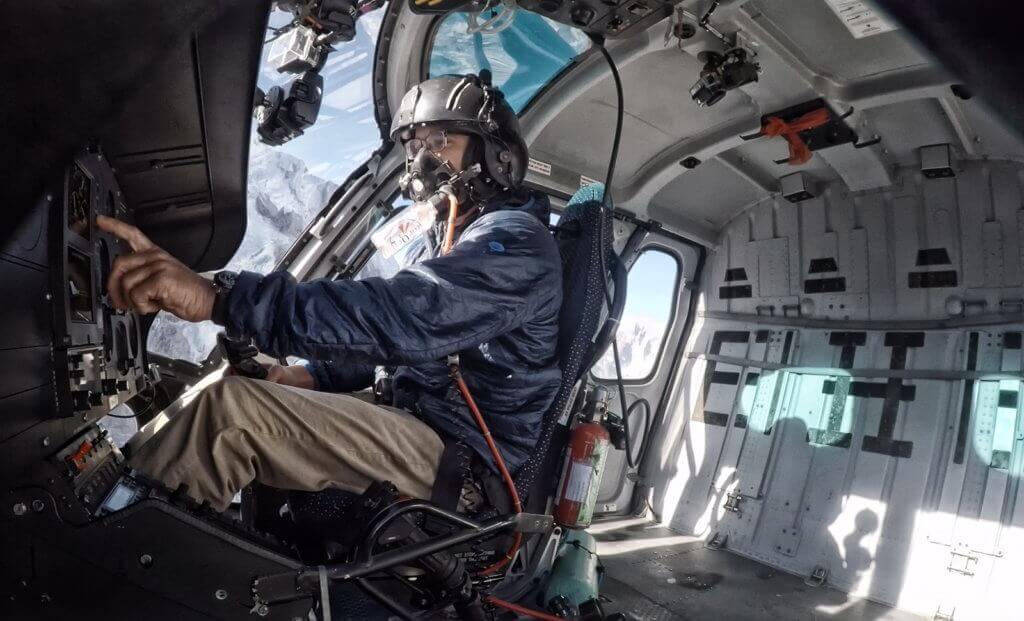
While the basic principles of mountain flying and power management hold true at 10,000 feet and 20,000 feet, “the higher you go, the more careful you have to be,” Laing said. The terrain in the Himalayas can also limit a pilot’s options, pointed out Chris Creamer, an American pilot who spent a season flying in Nepal for Mountain Helicopters, and who more recently has been flying search-and-rescue in the Sierra Nevada mountains of California.
“When I’m landing at high elevation here in the Sierras, even though I might be landing at 14,000 feet, it’s usually to a pinnacle so you have falling terrain basically all around you. So you commit to landing really late in your approach, and you always have an escape route,” he said.
“Up there, say landing at Camp 2 on Everest, you’re landing at 21,000 feet, but you’re landing in a bowl, so you still have [8,000 feet] of mountains all the way around you,” he continued. “So you’re low on power at that elevation anyway, but you’re also committing to your approach really early on.”
Moreover, “it’s always way warmer than it’s supposed to be,” noted Ryan Skorecki, an American pilot who flew in Nepal for Manang Air and also appeared in the TV show Everest Rescue. While the Himalayas are associated in most foreigners’ minds with snow and cold, the latitude of Mount Everest is approximately the same as that of Tampa, Florida, which can make for surprisingly high density altitudes.
However, high altitude isn’t the only challenge that helicopter pilots face in the Himalayas — they must also contend with swiftly changing mountain weather.
“That to me was the biggest obstacle, was the weather,” said Creamer. “It’s really easy to get trapped in places. You might be able to make it up to some area, and you’re above the clouds, but you can’t get back down. . . . There were times when we’d just land somewhere on a terrace and wait it out.”
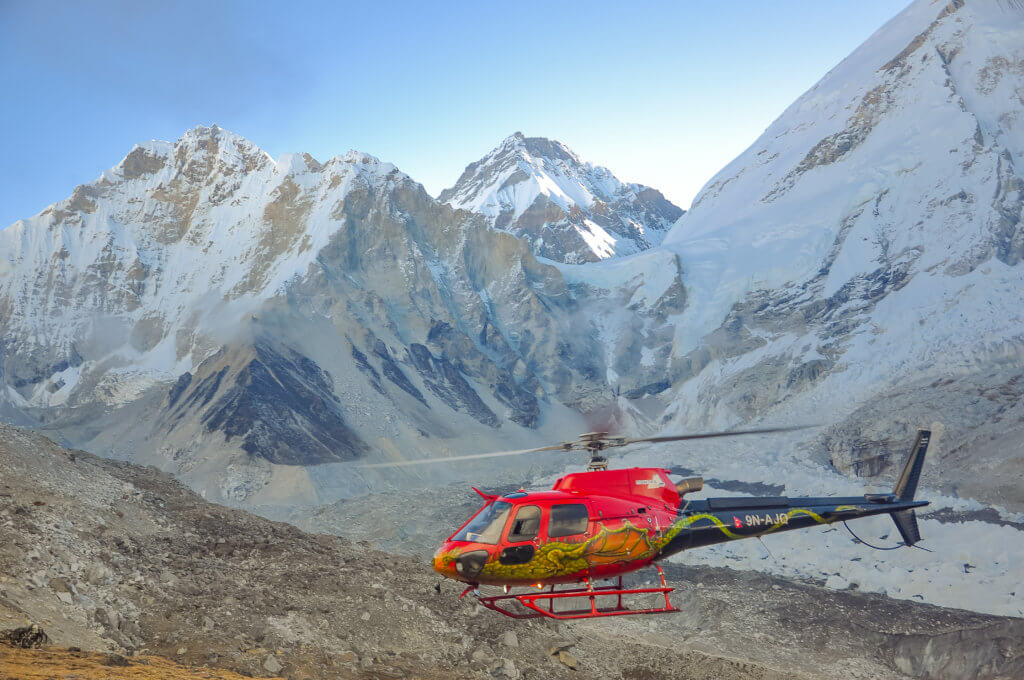
Fuel management is also a huge issue in a country where Jet A bowsers are few and far between. Pilots departing Kathmandu for the mountains will typically carry as much fuel as they can, then siphon it out at an intermediate location to reduce weight before continuing on to higher altitudes. Many missions require pilots to carefully plan their fuel needs and cache fuel in jerry cans along their route — a task rarely faced by pilots in countries with more developed aviation infrastructure.
The extreme risk factors faced by helicopter pilots in Nepal, combined with a relative lack of infrastructure and weather reporting, place a heavy burden on pilots to assess and manage those risks effectively. Andrew Gutsell, a New Zealand pilot who conducts high-altitude rescue missions for Air Dynasty, said that he mentally calculates a safety margin before each flight; if he’s not comfortable with that buffer, he won’t fly. As he explained, it simply doesn’t pay to take extra chances when you’re already operating so close to your own and the aircraft’s limits.
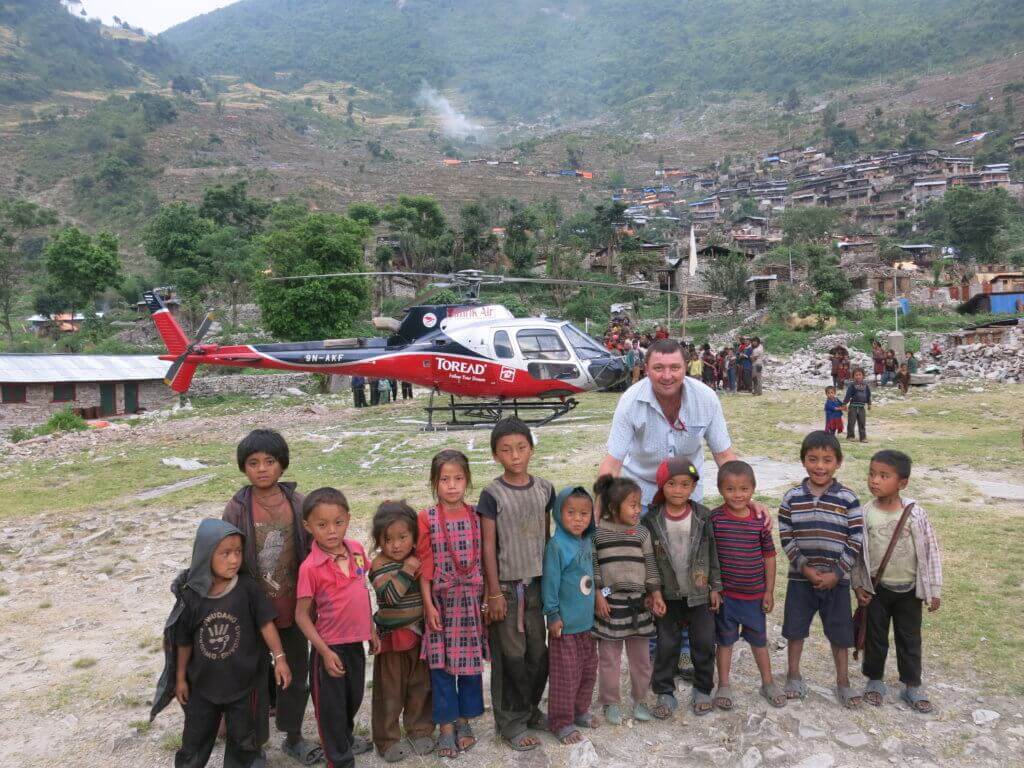
But all of these challenges have a flip side, and that is the unparalleled experience of flying in the most extraordinary mountains in the world. For Eric Ridington, a Canadian pilot currently working for Fishtail Air, flying in Nepal has been “the realization of a lifelong dream,” and his varied work in the country — from supporting hydropower projects in remote valleys, to flying lamas from their mountain monasteries — has given him a new appreciation for the country and its people.
“I’m so grateful for this amazing job,” he said. “It’s truly been a life-changing experience.”





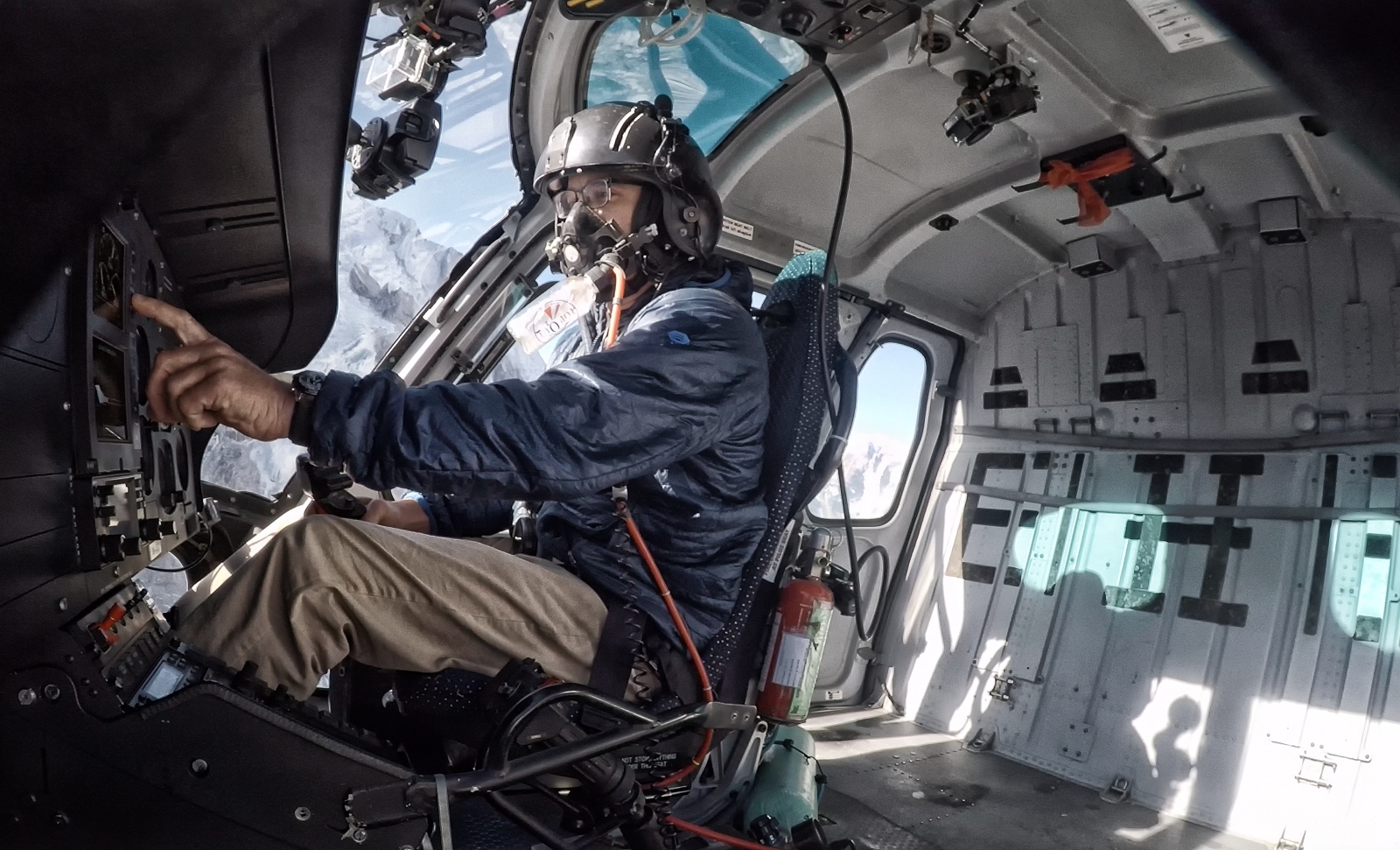
Can understand this well, Indian Army Chopper Pilots have been flying and landing at much higher altitudes than these on daily basis for more than three decades now in their Lama helicopters in Siachen Glacier. Its demanding.
Much higher then Mount Everest. Interesting….
hy ……..
vedio